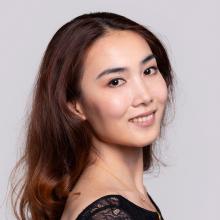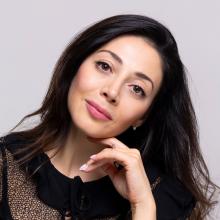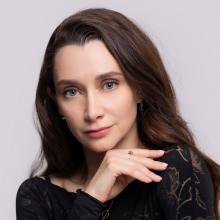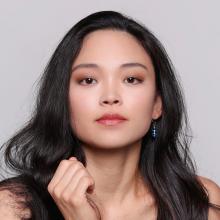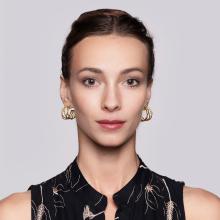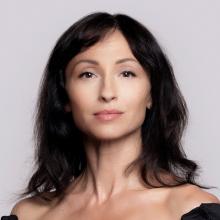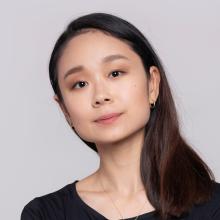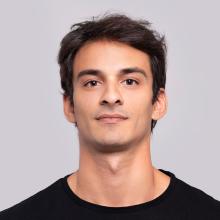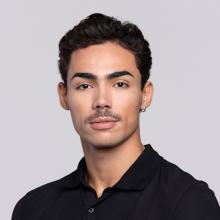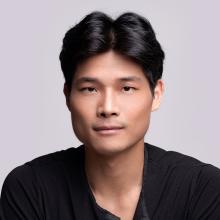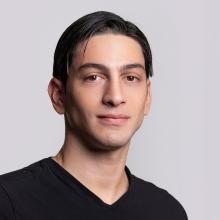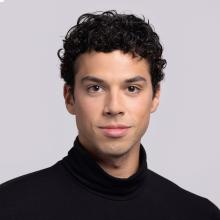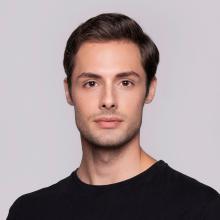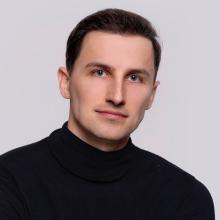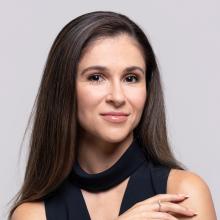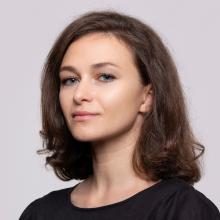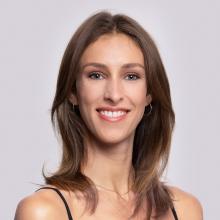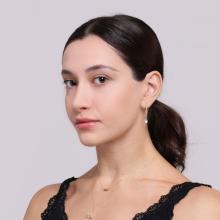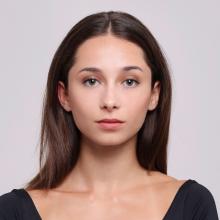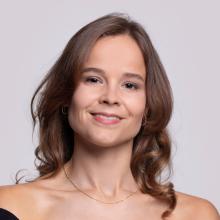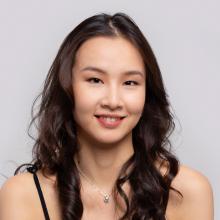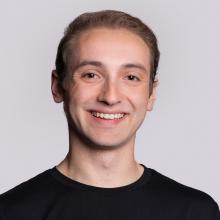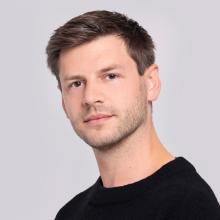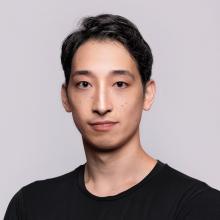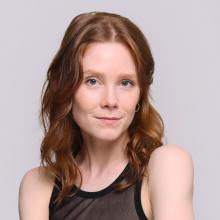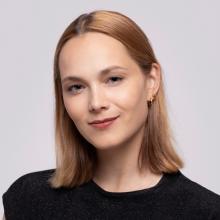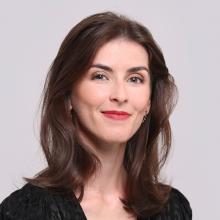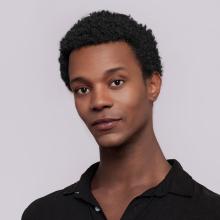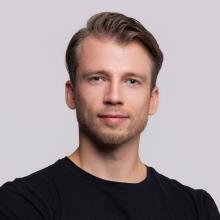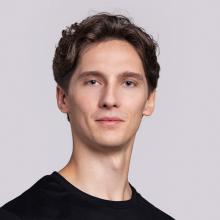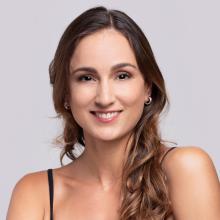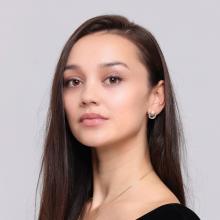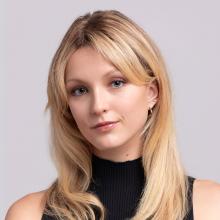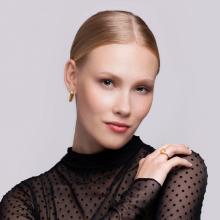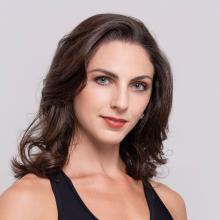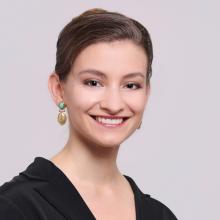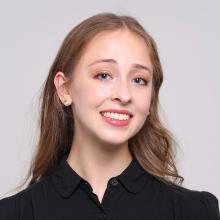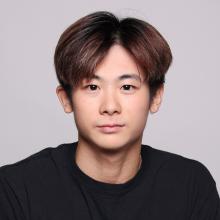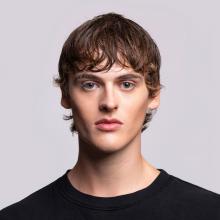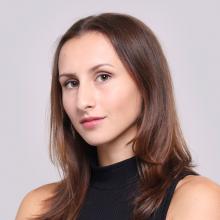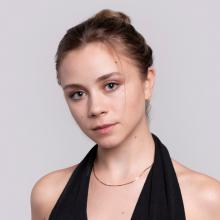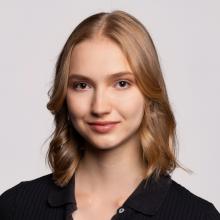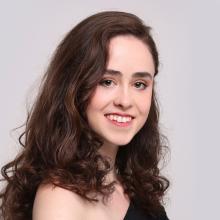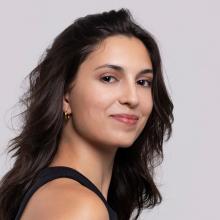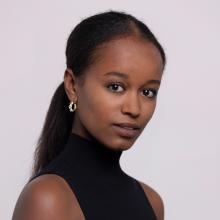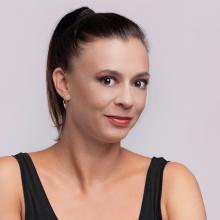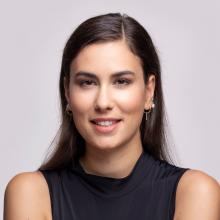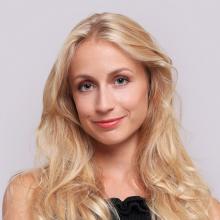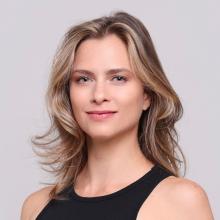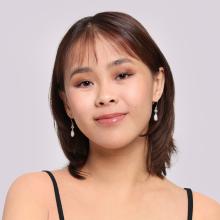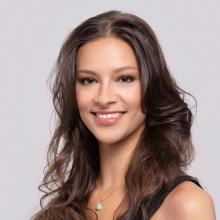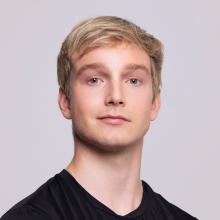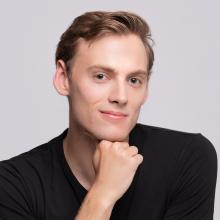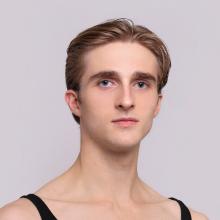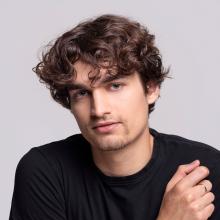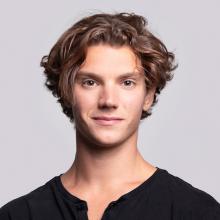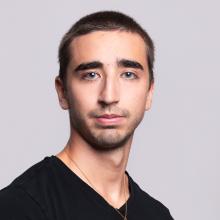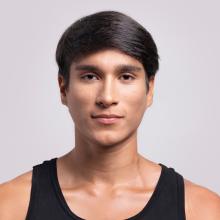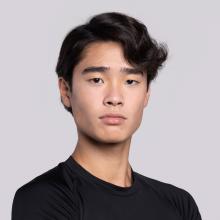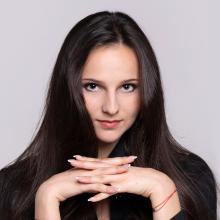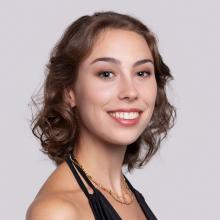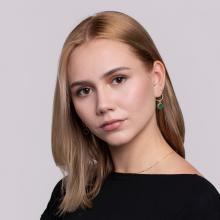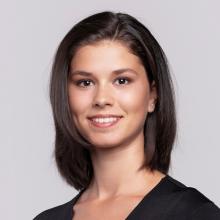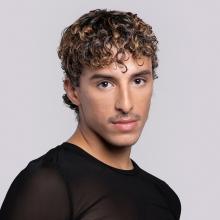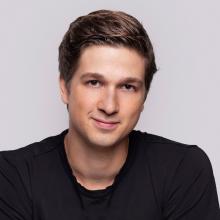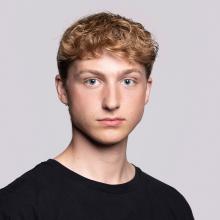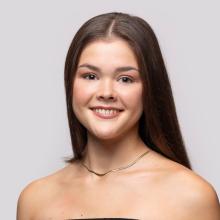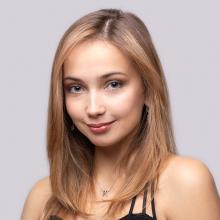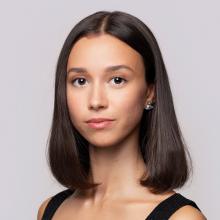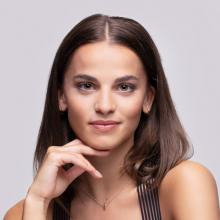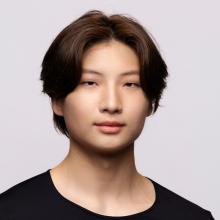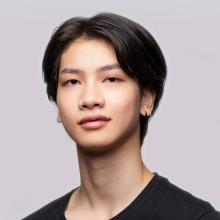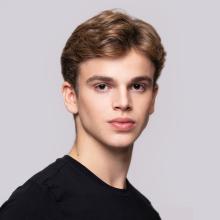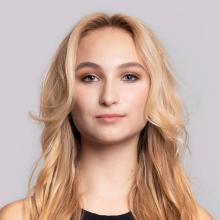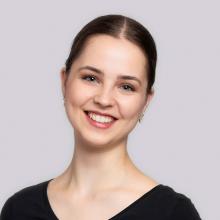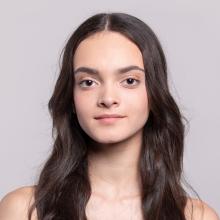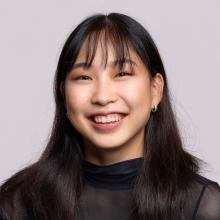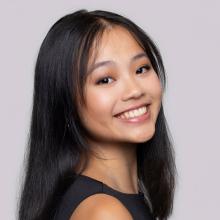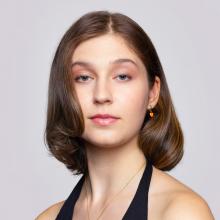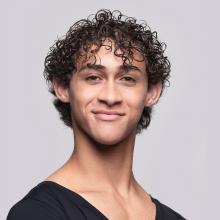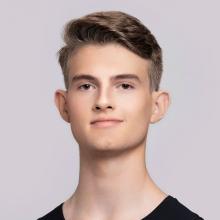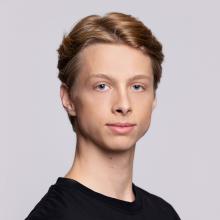Gala
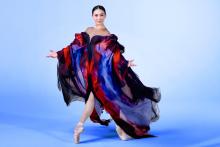
Preface
It gives me great pleasure to welcome you to Dutch National Ballet’s gala. This festive finale to the theatre season is a wonderful opportunity to watch our whole company – including the Junior Company and all the pupils and students of the Dutch National Ballet Academy. In the Grand Défilé, which opens the evening, you’ll see no fewer than 250 dancers appearing together on our stage.
Festive evening bursting with highlights
After this special opening, we present a varied programme that demonstrates the versatility of our dancers. Our stars shine not only in classical masterpieces – like Balanchine’s Tchaikovsky Pas de Deux and the finale from Raymonda – and in ballets by our resident choreographers Hans van Manen and David Dawson, but also in a duet by Christopher Wheeldon and new works for our company by Uwe Scholz and the duo LeónLightfoot. The programme also includes creations by upcoming choreographers. In Burden, for example, Lars de Vos (ISH Dance Collective) shows how ballet and popping can be combined as dance styles, and former principal dancer Remi Wörtmeyer presents SOUK, the duet he made last year for the Concertgebouw. You can also see the acclaimed Remembrance, by 26-year-old Joshua Junker, on the big stage of Dutch National Opera & Ballet for the first time. And after the interval comes a world premiere: especially for this evening, rising star Mthuthuzeli November has created a work for two of our leading principals.
In this gala, we also say farewell to two important members of our company. First pianist Olga Khoziainova has been inspiring our dancers enormously for 25 years and her regular appearances on stage have made her a firm favourite with our audiences as well. In addition, the evening is dedicated to Matthew Rowe, our inspired and expert music director for the past twelve years, who has been working with our company for over twenty years altogether. From now on, he’ll be taking the path of freelance conductor, in order to focus more on the music itself. Fortunately, Matthew will remain Dutch National Ballet’s regular conductor and we’ll see him return often in the coming season. Alongside the wide range of choreographic works you’ll be watching tonight, the gala is of course the ideal opportunity to show off your own festive side. Music and dance are for everyone, so don’t hesitate to take to the ‘dance floor’ yourself – in the foyer – after the performance! I hope you have a wonderful evening and really enjoy yourself and the dancing.
Ted Brandsen
Director Dutch National Ballet
Programme and credits
Programma
Programme Gala
Grand Défilé
The Grand Défilé has become a hugely popular fixture in Dutch National Ballet’s annual gala performances. Set to Tchaikovsky’s Polonaise, the Grand Défilé introduces you to the full complement of dancers in Dutch National Ballet and in the Dutch National Ballet Academy, which is affiliated to the company. First, you see the pupils of the academy, the youngest of whom – aged 10 and 11 – have just begun their training this season. They are followed by the academy’s Bachelor’s students, the dancers from the Junior Company and then all the dancers from Dutch National Ballet, appearing in order of rank. When the stage is filled with a total of almost 250 dancers, there is a festive finale presenting the principal dancers of the company – all of whom will be performing in the Gala.
Staging
Ted Brandsen, Judy Maelor Thomas
Music
Pyotr Ilyich Tchaikovsky – Polonaise from The Sleeping Beauty (1889)
Dancers
Principals and ensemble of Dutch National Ballet, the Junior Company, pupils and students from the Dutch National Ballet Academy
Speech Ted Brandsen
Future’s Tense
Former principal dancer Remi Wörtmeyer has many talents. He choreographs, designs fashion, jewellery and costumes – also for his own ballets – and is a successful painter and sculptor. In 2023, he created a new work for SOUK, an Amsterdam festival celebrating the Arab culture, which deals with a relationship going through troubled waters. Though there may be no despair as yet, the partners do not seem to be going in the same direction, despite being in more or less the same situation. Wörtmeyer created the duet for a small stage at the time, and has now deliberately chosen to retain this ‘closed-off’ character. Because, he says, “The energy in the duet is pent up and condensed, and there’s no escaping it.”
Choreography and costume and lighting designs
Remi Wörtmeyer
Music
Pehr Henrik Nordgren – Concerto for strings opus 54: part 1. Moderato, part 2. Allegro con passione
Ballet master
Judy Maelor Thomas
Dancers
Qian Liu – Semyon Velichko
After the Rain
“A love letter, a poem for both artists.” That is how Christopher Wheeldon described this duet, which he made in 2005 for New York City Ballet dancers Wendy Whelan and Jock Soto. The pas de deux is part of the complete work After the Rain, but is regularly performed as a stand-alone at galas, festivals and – maybe most poignantly – on 12 September 2013 on the fifty-seventh floor of 4WTC, the skyscraper on the corner of Ground Zero. The most striking thing about the pas de deux is its simplicity. The dancers wear flat ballet shoes and practice clothes, so that their lines are exposed without any frills. The music is serene as well. A friend sent it to Wheeldon at a time when the choreographer says he was “a bit stressed”. The audible calm of the composition is matched completely by the choreography, which evokes feelings of tenderness, devotion, loss and melancholy.
Choreography
Christopher Wheeldon
Music
Arvo Pärt – Spiegel im Spiegel (1978)
Cello
Artur Trajko
Piano
Ryoko Kondo
Costume designs
Holly Hynes
Lighting designs
Mark Stanley
Ballet master
Sandrine Leroy
Dancers
Anna Ol – Jacopo Tissi

Burden
In the previous productions Narnia (2015), GRIMM (2018) and Dorian (2023), artistic directors Ernst Meisner (Junior Company) and Marco Gerris (ISH Dance Collective) already succeeded in bringing together ballet and hiphop. Last March, they took the next step of giving their dancers creative freedom, encouraging them to conduct their own experiments in creating works in all sorts of combinations of hiphop and ballet. The results, presented in the Studio Boekman programme NextSteps, included a creation by ISH dancer Lars de Vos. In his work, he sought a movement form that did full justice to both ballet and popping, yet combined the two techniques well. His work Burden is about two brothers, the younger of whom is more talented than the elder. Impeded by his pride, the older brother cannot cope with it, and his ‘burden’ inevitably leads to conflict.
Choreography
Lars de Vos
Music
Jurre Hofman – Burden (2024)
Costume designs
Eddie Grundy, Lars de Vos
Lighting designs
Maarten Heijdra
Dancers
Soshi Suzuki – Herrold Anakotta (ISH Dance Collective)
Two Pieces for HET
Two Pieces for HET is one of the highlights of Hans van Manen’s acclaimed series of ‘ballets for two’. Originally, the two pieces formed the second and third parts of Three Pieces for HET, the ballet with which Van Manen made his successful comeback with Dutch National Ballet in 1997, after ten years’ absence. In the ballet, Van Manen wanted to investigate the principle of the anticlimax. He deliberately chose to begin with a group of dancers and then to let the choreography run down, as it were, by ending with two dancers. “I’ve unravelled a piece of knitting, rather than knitting it”, he said himself about the work. Even when the group section is left out, this principle still holds. The first part of Two Pieces for HET is a swirling, nervously energetic duet performed at breakneck speed. The second is a tranquil adagio that gradually decreases in movement density.
Choreography
Hans van Manen
Music
Erkki-Sven Tüür – Illusion (1993), Arvo Pärt – Psalom (1995)
Set and costume designs
Keso Dekker
Lighting designs
Jan Hofstra
Ballet master
Rachel Beaujean
Dancers
Riho Sakamoto – Constantine Allen
Tchaikovsky Pas de Deux
A festive and virtuoso gem. That sums up this eight-minute-long ballet from 1960, in which George Balanchine deals with the traditions of the classical pas de deux. In the duet, he pays tribute not only to Tchaikovsky, but also to his great role model Marius Petipa, who collaborated with the composer on three of the most famous nineteenth-century ballets: The Sleeping Beauty, The Nutcracker and Swan Lake. Balanchine also took the famous ‘fish dive’ from the first of these ballets for his Tchaikovsky Pas de Deux, where the ballerina does a quick dive forwards, to be caught by her partner just in time. But Balanchine does not quote literally. He presents everything just that bit differently, giving it playful panache, thus lending freshness, spirit and dynamism to the duet.
Choreography
George Balanchine
Music
Pyotr Ilyich Tchaikovsky – Act 3 from Swan Lake (1875-1876)
Costume designs
Barbara Karinska
Lighting designs
Jack Owen Brown
Ballet master
Guillaume Graffin
Dancers
Maia Makhateli – Victor Caixeta
Postscript - ‘Black duet’
Although former NDT choreographers Sol León and Paul Lightfoot created Postscript as early as 2005, the work contains all the elements of their mastery: skilled musicality, an impalpable, mysterious atmosphere and an indescribably inventive movement idiom, ranging from lyrical to unruly to virtuoso. Principal dancer Olga Smirnova says, “It’s a very challenging, intriguing process to find new ways of moving that are totally different to the classical ballet positions I’m used to. The expressiveness of certain deliberately unattractive movements dramatically reinforce the main theme of the duet: a break-up. For me, this duet is an organic link between the music of Philip Glass and the psychological undertone of the choreography, which expresses the pain and disappointment of unattainable happiness.”
Choreography and costume designs
Sol León and Paul Lightfoot
Music
Philip Glass – Metamorphosis Two (1989)
Piano
Olga Khoziainova
Costumes made by
Hermien Hollander
Lighting designs
Wijnand van der Horst
Staging
Olivier Coëffard
Ballet master
Jozef Varga
Dancers
Olga Smirnova – Jacopo Tissi

ANIMA ANIMUS - Finale
One of the biggest hits of last season was the Dutch premiere of ANIMA ANIMUS by Associate Artist David Dawson. Based on Dawson’s distinctive contemporary interpretation of classical ballet technique, the work explores Carl Gustav Jung’s concept of anima (the subconscious female aspect of the male psyche) and animus (the subconscious male aspect of the female psyche). The choreography explores the spaces between technical virtuosity and lyrical poetry, between humanity and architecture, and between form and emotion. In the whirling finale performed at this gala, Dawson sets the dancers powering across the stage, sending them skyward as it were, soaring and gliding through the complex dance language like angels, yet also expecting them to remain grounded, so that their movements go far beyond the light, elevated aesthetics of classical ballet.
Choreography
David Dawson
Music
Ezio Bosso – Violin Concerto No. 1 - ‘Esoconcerto’ - III. Presto con Fuoco (2017)
Violin
Frederieke Saeijs
Set designs
John Otto
Costume designs
Yumiko Takeshima
Lighting designs
James F. Ingalls
Ballet master
Jozef Varga
Dancers
Riho Sakamoto, Yuanyuan Zhang
Constantine Allen, Joseph Massarelli, Timothy van Poucke, Sem Sjouke
Kira Hilli, Arianna Maldini, Alexandria Marx, Mila Nicolussi Caviglia
Interval
Remembrance
At the beginning of last year, the young Dutch dancer and choreographer Joshua Junker made his first creation for the Dutch National Ballet’s Junior Company. It was a great success. Remembrance got glowing reviews and Junker received the Incentive Award from Dansersfonds ’79. Junker took inspiration for his ballet from the relationship between the human body as it is today and as it was around two hundred thousand years ago. Though there is little intrinsic difference – both are composed of the same biological and chemical processes – the society in which they function has changed completely. What challenges does that involve for mankind today? How do you deal with your ‘primal body’ in a world filled with technological innovations?
Choreography
Joshua Junker
Music
Hidden Orchestra – East London Street (Drums Only Version) Balmorhea – Remembrance
Sound design
Bas Ibellini
Costume designs
Oliver Haller
Lighting designs
Wijnand van der Horst
Ballet master
Michele Jimenez
Dancers
Patrik Benák, Nicola Jones, Polina Loshchylina, Frédérique Meewis, Robin Park, Skya Powney, Soshi Suzuki, Francesco Venturi, Vincent Vivet, Louisella Vogt, Sven de Wilde, Bo-Ann Zehl
Sonate
As a ten-year-old, Uwe Scholz dreamed of becoming a conductor. However, Scholz grew into one of the most important choreographers of his generation. He was also artistic director and chief choreographer with Ballett Zürich and the Leipziger Ballett, respectively. In 1987, he created Sonate, a pas de deux that symbolises the life journey of a loving couple. Soloist Elisabeth Tonev says, “Sonate is very special to me. It’s about friendship and I’m dancing it with Victor; the most special friend of my youth and my dancing partner. So it’s a real memento of the bonds we share and all the memories we’ve created together. A piano, a cello and two friends on stage – what more do you need?”
Choreography
Uwe Scholz
Music
Sergei Rachmaninov – from Cello Sonata in G minor op. 19 – 3rd movement. Andante
Cello
Artur Trajko
Piano
Mikhail Murach
Costume designs
Dutch National Ballet Costume Department
Lighting designs
Wijnand van der Horst
Staging
Thiago Bordin
Ballet master
Guillaume Graffin
Dancers
Elisabeth Tonev – Victor Caixeta
Thando - World premiere
Mthuthuzeli November was born in Cape Town, South Africa, and has developed rapidly as a dancer and dance maker in recent years. His works are characterised by their clear, individual style, whereby November impacts and reinforces classical dance with rhythms and other influences from Africa. Ted Brandsen, director of Dutch National Ballet, says, “It was high time to introduce the Netherlands to Mthuthuzeli! In the rest of Europe and in America, his star rose long ago, but in this country hardly anyone has seen his work. That’s about to change, as starting in the 2024-2025 season he will take on the role of Associate Artist with the Dutch National Ballet Academy. As a foretaste, this evening we’re presenting Thando, which he has created especially for the gala.” Thando means ‘love’, and the duet explores this theme – and how powerful yet delicate love can be.
Choreography
Mthuthuzeli November
Muzic
Mthuthuzeli November – Thando
Costume designs
Oliver Haller
Lighting designs
Wijnand van der Horst
Ballet master
Jozef Varga
Dancers
Anna Tsygankova – Giorgi Potskhishvili

Trois gnossiennes
Trois gnossiennes, to the music of the same name by Erik Satie, was originally the closing section of Hans van Manen’s Five Short Stories (1982). The piece was later included in the programme Piano Variations, in which Van Manen was concerned – as always – with the often discordant relationships between men and women. Following the vicious satire of Sarcasmen (Piano Variations II), a temporary truce between the sexes appears to have been declared in Trois Gnossiennes (Piano Variations III). Although it starts with repressed tension between the man and woman, the atmosphere gradually changes to one of submission and harmony. The partners display a natural trust in one another and complement each other perfectly. By having the piano and pianist slowly pushed around the stage, Van Manen makes them an integral part of the choreography.
Choreography
Hans van Manen
Music
Erik Satie – Trois gnossiennes (1893)
Piano
Olga Khoziainova
Costume designs
Joop Stokvis, Hans van Manen
Lighting designs
Jan Hofstra
Ballet masters
Rachel Beaujean, Larissa Lezhnina
Dancers
Erica Horwood – Timothy van Poucke
Piano movers
Robin Park, Guillermo Torrijos, Francesco Venturi
Raymonda - Pas Classique Hongrois
For the occasion of its sixtieth anniversary, at the beginning of 2022, Dutch National Ballet presented the premiere of its own version of Raymonda, the last big masterpiece created by Marius Petipa, in 1898. In this large-scale production, crowned with four and five stars, associate artistic director Rachel Beaujean added new lustre to Petipa’s beautiful choreography, whilst also placing the story in a new context that is more relevant to today. Rather than following the traditional path carved out for her – marrying the crusader Jean de Brienne – the young grand duchess Raymonda chooses her own path and her true love: the mysterious sheikh Abd al-Rahman. In the Gala, you see the apotheosis of the ballet: the Pas Classique Hongrois. To celebrate the wedding of Raymonda and Abd al-Rahman, a grand, virtuoso dance party is given, with the two radiant lovers at its centre.
Choreography
Marius Petipa
Production and additional choreography
Rachel Beaujean
Music
Alexander Glazunov – from the third act of Raymonda (1898)
Set and costume designs
Jérôme Kaplan
Lighting designs
James F. Ingalls
Ballet masters
Guillaume Graffin, Larissa Lezhnina
Dancers
Maia Makhateli – Young Gyu Choi
Nina Tonoli, Yuanyuan Zhang, Sebia Plantefève-Castryck, Elisabeth Tonev, Chloë Réveillon, Luiza Bertho, Arianna Maldini, Emma Mardegan
Sem Sjouke, Sho Yamada, Jan Spunda, Fabio Rinieri, Patrik Benák, Sander Baaij, Leo Hepler, Daniel Silva
NB: the casts are subject to change up to the last moment.
Music licenses
Future’s Tense
Music Published / Licensed by © Schott Music GmbH & Co. KG, Mainz / Albersen Verhuur B.V. ’s-Gravenhage
After the Rain
Music Published / Licensed by © Universal Edition, Wien / Albersen Verhuur B.V. ’s-Gravenhage
Two pieces for HET
Illusion: Music Published / Licensed by © Fennica Gehrman, Helsinki / Albersen Verhuur B.V. ’s-Gravenhage
Psalom: Music Published / Licensed by © Universal Edition, Wien / Albersen Verhuur B.V. ’s-Gravenhage
ANIMA ANIMUS
Music Published / Licensed by © Buxus Edizioni, Milan / Albersen Verhuur B.V. ’s-Gravenhage
Musical accompaniment
Dutch Ballet Orchestra conducted by Matthew Rowe
Production of sets, costumes, props, hair and makeup, stagecraft, lighting, and sound
Technical Department of Dutch National Opera & Ballet
Production manager
Anu Viheriäranta
Stage managers
Kees Prince
Wolfgang Tietze
Pieter Heebink
Production supervisor
Gerko Min
First carpenter
Jeroen Jaspers
Lighting supervisor
Wijnand van der Horst
Lighting manager
Angela Leuthold
Follow spotters
Anton Shirkin
Carola Robert
Marleen van Veen
Panos Mitsopoulos
Follow spotters coordinator
Ariane Kamminga
Sound engineers
David te Marvelde
Florian Jankowski
Costume production
Costume Department of Dutch National Ballet
Assistant costume production
Eddie Grundy
First dresser
Andrei Brejs
First make-up artist
Linda Vreeburg
Orchestra manager
David Eijlander
Total duration
Circa two hours and fifty minutes, including one interval
Dutch Ballet Orchestra
First violin
Sarah Oates, concertmaster
Kotaro Ishikawa
Suzanne Huynen
Robert Cekov
Tinta Schmidt von Altenstadt
Majda Varga-Beijer
Olga Caceanova
Sandra van Eggelen-Karres
Irene Nas
Anna Sophie Torn
Hester van der Vlugt
Second violin
Arnieke Ehrlich
Yumi Goto
Radka Dijkstra-Dohnalová
Willy Ebbens
Christiane Belt
Casper Donker
Dick de Graaff
Bert van den Hoek
Danna Paternotte
Myrte van Westerop
Viola
Naomi Peters
Arwen Salama-van der Burg
Maria Ferschtman
Joël Waterman
Dirk Feller
Giles Francis
Frank Goossens
Karen de Wit
Cello
Artur Trajko
Lies Schrier
Evelien Prakke
Willemiek Tavenier
Emma Besselaar
Oliver Parr
Double bass
Annelies Hemmes
Lucía Mateo Calvo
Teun Godschalk
Nienke Kosters
Florian Lansink
Flute
Sarah Ouakrat
Karin Leutscher
Marie-Cécile de Wit
Oboe
Juan Esteban
Mendoza Bisogni
Ainhoa Pérez Echepare
Clarinet
Ina Hesse
Abraham Gomez Chapa
Joris Wiener
Bassoon
Janet Morgan
Maud van Daal
Horn
Ward Assmann
Elisabeth Oltra Sangenaro
Christiaan Beumer
Hendrik Marinus
Trumpet
Bob Koertshuis
Erik Torrenga
Joost Hettinga
Bas Otten
Trombone
Bram Peeters
Wilco Kamminga
Marijn Migchielsen
Tuba
Elias Gustafsson
Timpani
Peter de Vries
Percussion
Richard Jansen
Federico Martínez Moreno
René Oussoren
Arjan Roos
Harp
Jet Sprenkels
Piano
Elena Kim

Bridge builder between music and dance
Departing music director of Dutch National Ballet and principal conductor of Dutch Ballet Orchestra Matthew Rowe combines the magic of live music with the enchantment of ballet. “An orchestra playing live adds extra electricity to a ballet performance.”
Bridge builder between music and dance
Matthew Rowe is a man with a mission: achieving an ultimate symbiosis between dance and music. He has been pursuing this mission with Dutch National Ballet since 2004, when he made his debut with the company as a guest conductor. Following his appointment as music director of Dutch National Ballet and principal conductor of Dutch Ballet Orchestra in 2012, Rowe has played an important role in the musical and artistic collaboration between ballet company and orchestra.
Live ballet performances require perfect synchronisation between music and dance. This demands not only technical precision, but also an instinctive collaboration between conductor, orchestra and dancers. In an interview on the Dutch National Opera & Ballet website, Rowe says, “In English, the word ‘conductor’ literally means a material that allows the flow of electricity. As a conductor, I make it possible for something to be created, whatever that might be. Live music is a living, breathing thing, created by musicians in the pit. That makes it a shared journey with the dancers on stage – every night is different.”
Perfectly interwoven
The conductor knows better than anyone how music supports dance, while dance brings music to life. Rowe says, “The most beautiful ballet performances arise when the dancing and music are perfectly interwoven, whereby one art form reinforces the other. It’s my job to create the best possible blend between these two different expressive languages – one physical, and the other aural.”
Rowe’s knowledge of music and sense of rhythm also make him the perfect partner for dancers. He knows exactly when to adapt the music to give the dancers scope to show off their best work. “I discuss with the dancers what they need from the orchestra. Each dancer is different. One might turn very quick pirouettes, while another might perform very high jumps. These are things I have to take into account in accelerating the tempo or taking it down a notch. That may seem like a limitation, but I find it enriching to work with dancers. I enjoy the dialogue and the trust. The orchestra and the dancers grow in a performance, and together we find something new in every performance.”
Flexible and alert
Dialogue and trust are also important between conductor and orchestra, says Rowe. “The musicians have their backs to the stage, so I’m the only one who can see the dancers. In order to be able to respond well to them, the orchestra relies completely on me.” The orchestra also has the phenomenal ability to respond quickly, yet stay together at the same time, adds Rowe. “Not only do the musicians of Dutch Ballet Orchestra play beautifully, but they’re also extremely flexible and alert. They can adapt at any given moment to what’s happening on stage. Normally speaking, eye contact is the most important form of communication between the conductor and the orchestra, but because I need to focus so intently on the dancers in a ballet performance, the musicians have to depend mainly on physical gestures for their inspiration and guidance. Fortunately, the orchestra and I have been working together a long time and we understand each other implicitly.”
Rowe thinks it’s fantastic that live musical accompaniment is valued and even cherished by Dutch National Ballet. “Orchestras are under such pressure nowadays, so it’s wonderful that the importance of live music is never forgotten here. The fact that our dancers can perform to live accompaniment, sometimes from sixty, seventy or eighty musicians in the pit, is something very special and precious.”
Musical farewell
Tonight, Dutch National Ballet is saying farewell to two important people: first pianist Olga Khoziainova and Matthew Rowe, music director of Dutch National Ballet and principal conductor of Dutch Ballet Orchestra. So on these pages you can read tributes to them from their colleagues, who talk about what they mean to them personally and about the musicians’ significance for the company.

Matthew Rowe
Matthew Rowe is an exceptionally versatile conductor with a wide repertoire. He is distinguished by his talents and his experience in the field of complex collaborative productions. He made his debut with Dutch National Ballet in 2004, after which he returned each season as a guest conductor, until his appointment as music director of Dutch National Ballet and principal conductor of Dutch Ballet Orchestra in 2012. In this dual position, Rowe played an important role in the musical and artistic partnership between ballet company and orchestra, and made a huge contribution to the development of Dutch Ballet Orchestra and to the position and prestige it has gained internationally as a leading orchestra for dance.
Colleagues about Matthew Rowe
Ted Brandsen, artistic director of Dutch National Ballet:
“Matthew Rowe has made an enormous contribution to the partnership between Dutch National Ballet and Dutch Ballet Orchestra, and thus to the artistic growth of our company. Under his inspiring musical leadership, many wonderful projects have taken place, and dancers and musicians have grown closer together. Matthew is an exceptional musician and a gifted ballet conductor, who really knows what’s needed by dancers on the one hand, and by musicians on the other, and who always tries to bring people together.”
Hans van Manen, choreographer:
“Matthew is a wonderful conductor who’s extremely good at accompanying dance, as he understands both the music and the choreography. He’s open to suggestions – I’m always allowed to interrupt him if necessary – and we’ve worked together really well over the years.”

Hebe Mensinga, concertmaster and first violin with Dutch Ballet Orchestra:
“I have great memories of the times Matthew invited the whole orchestra to his home at the beginning of the season. He and his wife were so warm and hospitable, and they served the most delicious food. It was also a paradise for the kids, who played in the garden and the attic, while munching on all sorts of cake. The week afterwards, we started intensive rehearsals in preparation for the first production of the season. It was always a delightfully festive start to the season!”
Piet van Gennip, director of Dutch Ballet Orchestra:
“Matthew Rowe, our exceptional principal conductor, came to join Dutch Ballet Orchestra and Dutch National Ballet following the severe cuts of 2012. He played an important role in developing the orchestra to the position it occupies today; continually performing at the highest artistic level. For both me and the management team of Dutch Ballet Orchestra, it’s been a great pleasure to work with Matthew over the past eleven years. He’s someone with a great sense of communication and a sharp eye for detail, who’s shown incredible devotion in bringing Dutch Ballet Orchestra and Dutch National Ballet as close together as possible, both on and off stage.”
Annabelle Lopez Ochoa, choreographer:
“Matthew Rowe: the warmest and kindest conductor I’ve ever worked with. I wish him lots of success, pleasure and good times in his new musical adventures. And of course I hope he and his baton will still often cross the path of my ballets!”

Olga Khoziainova
Born in Russia, Olga Khoziainova started music lessons at the age of six, eventually graduating with diplomas in piano, music history and music theory. She then joined the Moscow Chamber Ballet (now the National Theatre), while also performing as a leader and soloist with the Moscow Union of Music Ensembles. In 1992, Khoziainova continued her career with Finnish National Ballet, and she also worked with Hamburg Ballett and American Ballet Theatre. In 1998, she was invited to join Dutch National Ballet as first pianist. Since then, she has lived and worked in Amsterdam. Alongside her work for various ballet companies, Khoziainova is in great demand for regular performances as a concert pianist, including appearances in Moscow, St Petersburg, Shanghai, Beijing, London and Paris, and at festivals in Edinburgh and Houston.
Colleagues about Olga Khoziainova
Ryoko Kondo, pianist with Dutch National Ballet:
“Olga has been inspiring us for many years with her music. She’s a spontaneous musician with amazing flexibility, which is perfect for ballet. In the classes, she gives the dancers great pleasure and support, with numerous wonderful melodies. But her performances on stage were always very modest, as her priority – even then – was to support the dancers. We all loved her as our charming, musical fairy godmother!”
Anna Tsygankova, principal dancer:
“I’ve always said that music keeps me in balance and can lend me wings. And I’m eternally grateful to Olga that I’ve experienced that with her. Over the past years, she’s shown me the great impact of having a true musician who supports you in your dancing and steers you through the steps. I remember some wonderful rehearsals where she accompanied me in the Odette solo, Giselle steps or other classical gems. Together, we were able to create a magical atmosphere filled with meaning.”

Hans van Manen, choreographer:
“I’ve worked with Olga on many occasions. She understands immediately what you mean, so it always works straight away! Her playing is very personal and always wonderful.”
Altin Kaftira, former principal dancer and photographer with Dutch National Ballet:
“I could talk about Olga non-stop. She’s the most sociable, generous and inspiring colleague, artist and friend I know. Every day, from start to finish, she exudes so much energy that you almost feel the warmth of the sun – even on a cloudy day. And she does it so naturally and sincerely that she probably doesn’t even realise it herself. When I was still a dancer, my criterion for which class to take was simple: I went to the class where Olga was playing and took the place at the barre that was closest to the piano. Sometimes, she’d ask which music we’d like to hear, or she’d ask us for four crazy sounds and then make a whole song out of them. It always made me laugh. Her music was a real ray of sunshine in our morning routine.”
10 years of the Junior Company
Some of the highlights
10 years of the Junior Company
August 2013
Foundation of the Junior Company by Dutch National Ballet and the Dutch National Ballet Academy
November 2013
Premiere in first tour of the Netherlands
2014
Start of the foreign tours, beginning with London. In subsequent years, tours to countries like Spain, Indonesia and Hungary followed.

2015
Narnia: The lion, the witch and the wardrobe, in collaboration with hiphop dance company ISH Dance Collective

2015
Blink, choreographed by Juanjo Arqués. Artistic director Ernst Meisner: “This work suits our young dancers so well – and still does so today.”

2016
Performance at the Prix de Lausanne ballet competition, for which Ernst Meisner creates the ballet No Time Before Time.

2017
Caroline Sayo Iura is appointed ballet master of the Junior Company

2018
GRIMM, in collaboration with ISH Dance Collective

2018
The little big chest, a children’s production choreographed by Ernst Meisner

2020
Valse Fantaisie, the first Balanchine ballet in the Junior Company’s repertoire

2021
In and Out, ballet gem from the treasure trove of Hans van Manen

2023
Dorian, in collaboration with dancers from Dutch National Ballet and ISH Dance Collective

2024
Echoes of Memories (world premiere), choreographed by Joseph Toonga, as part of the anniversary programme Ten
